Want to turn a green lane into a brown lane, tow a Gulaschkanone across a snowy field, or roam the Western Desert trashing Axis airfields? Get a 4×4. Want quick introductions to games of interest to realism relishers and old fogies? Read a 3×3. Prior to penning one of these articles I’ll play three tempting titles for at least three hours each. While it would be cavalier to call the reports that result from such brief auditions ‘reviews’, it’s conceivable they might lead to more prolonged playtests, and prompt or prevent the odd purchase.
Winter Falling: Battle Tactics
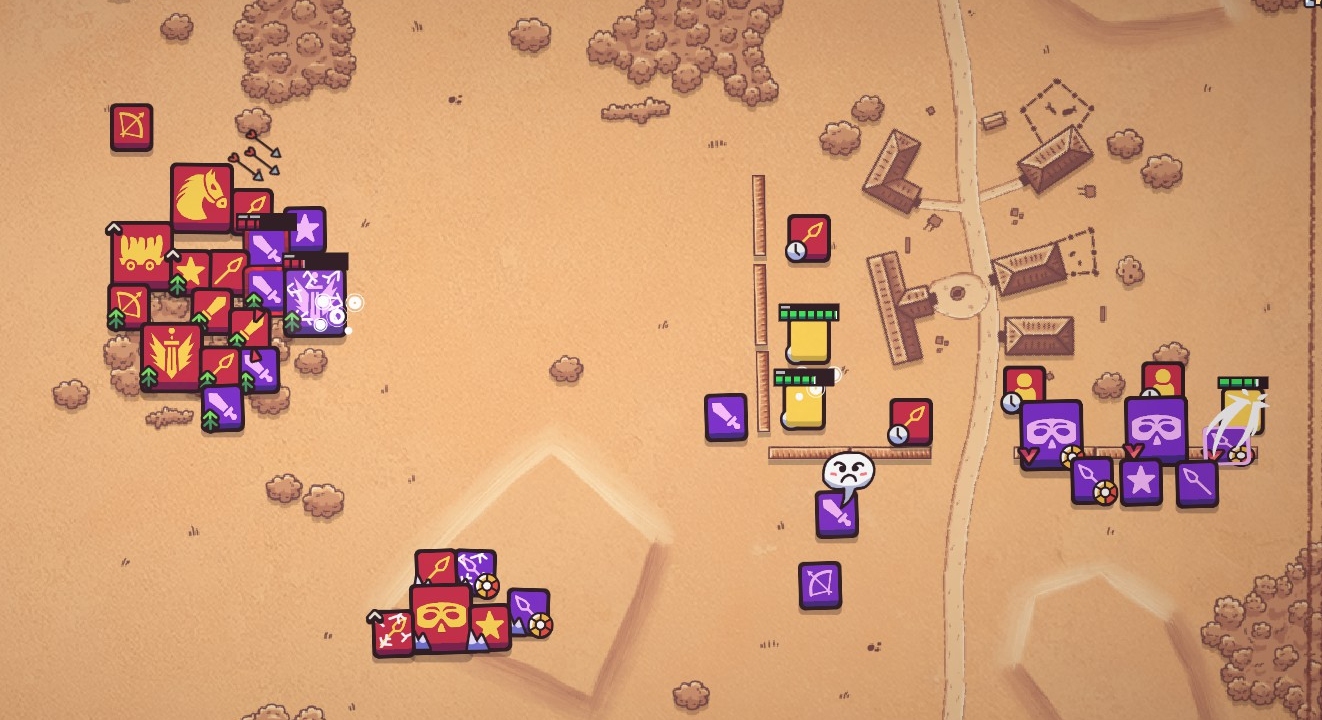
Talk about cutting it fine! I’ve just won the final battle in the Winter Falling campaign by the narrowest of margins. The clash began like this…
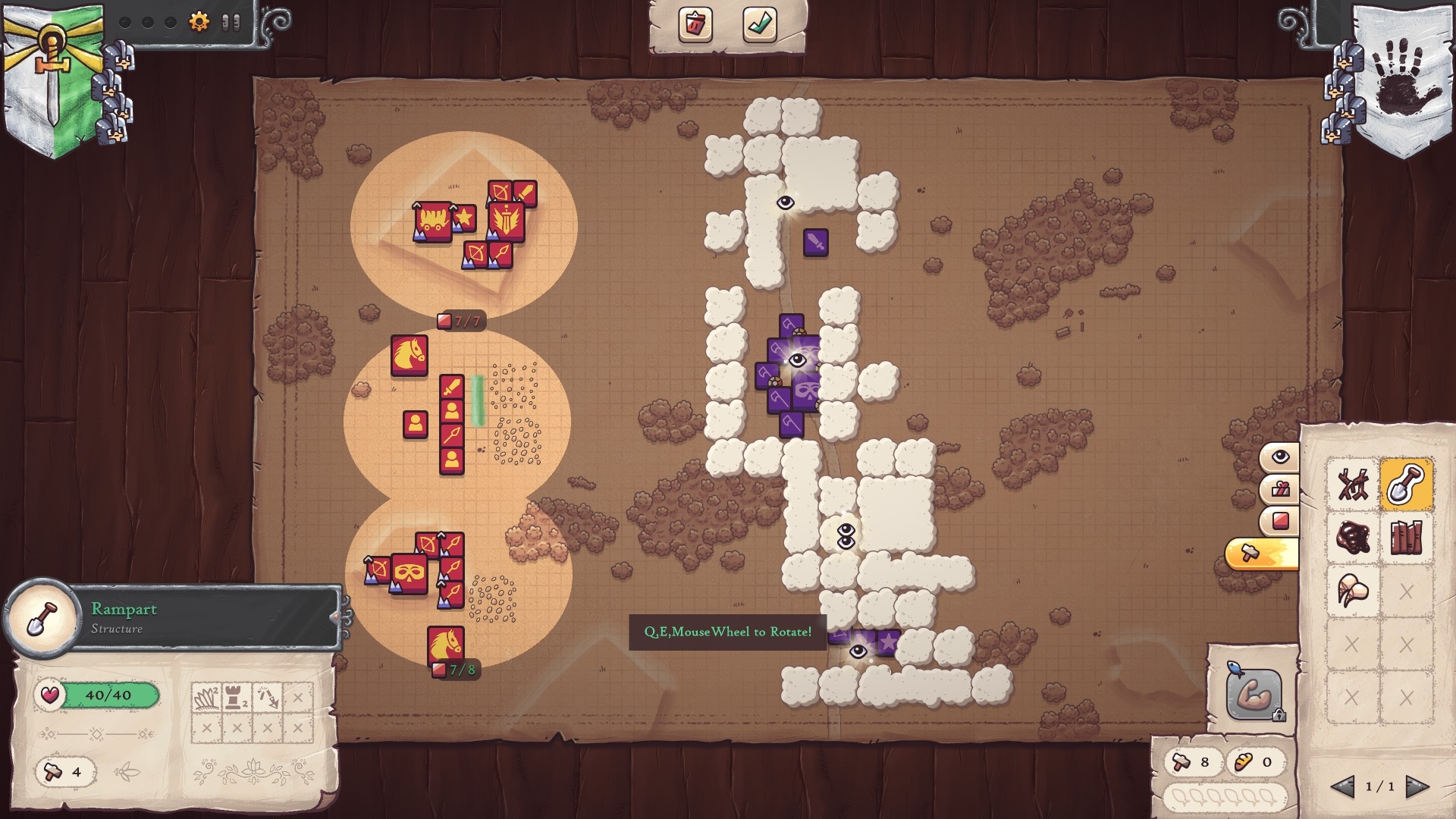
(My units are the red ones).
And ended like this…
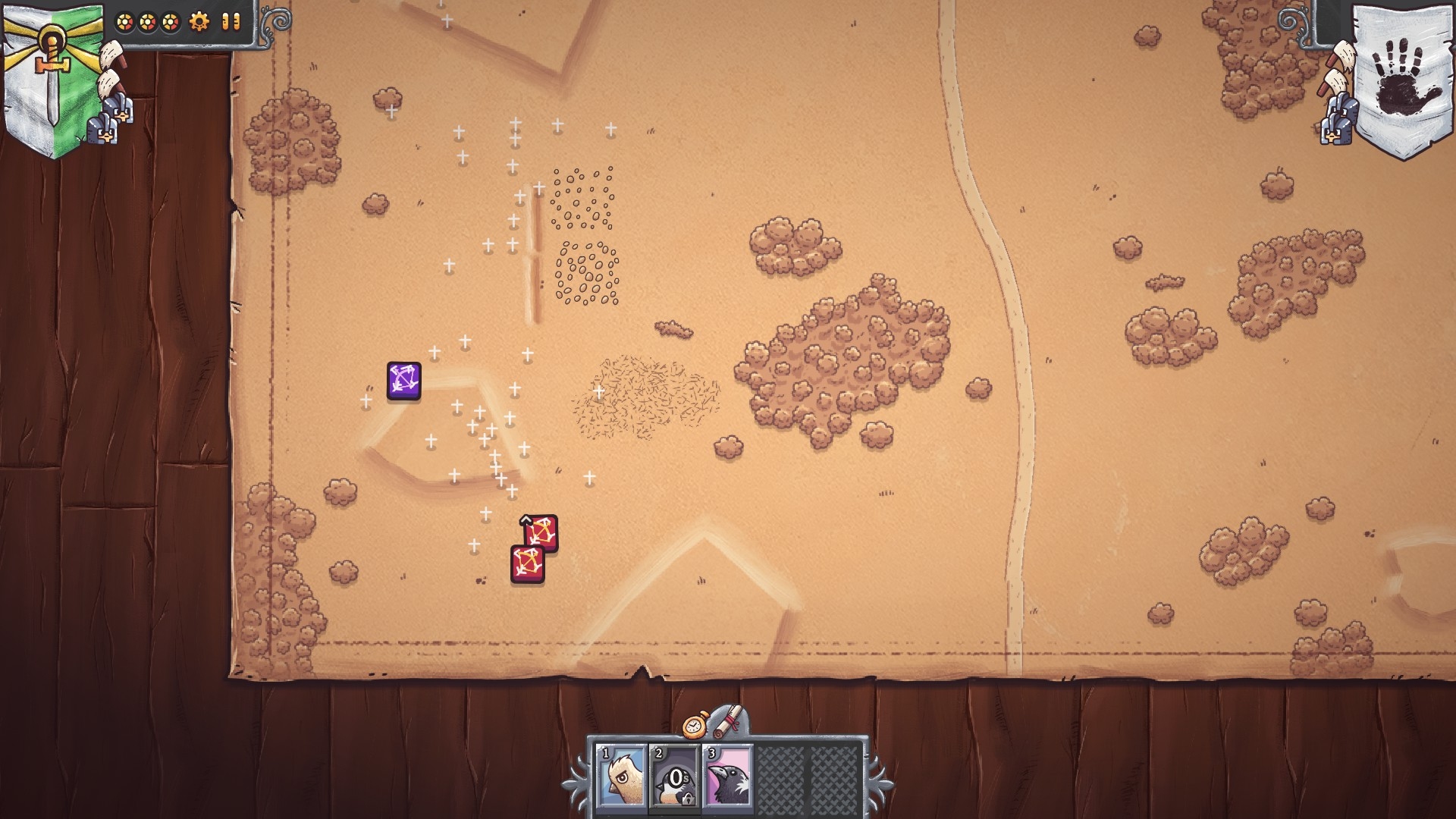
In between those two screenshots there was around six minutes of concentrated carnage, chaos, panic, and tension.
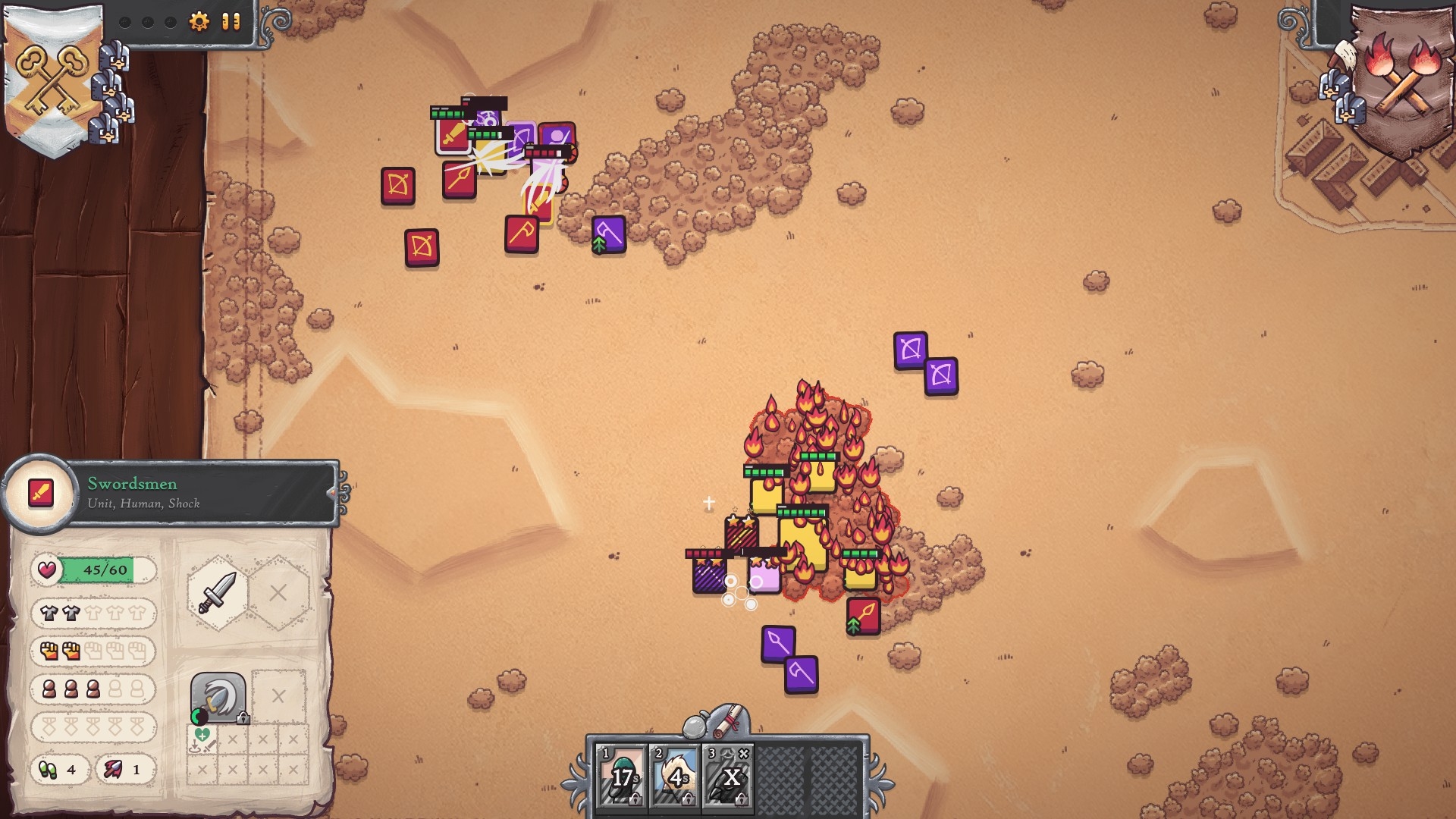
Inspired by Total War, Warhammer, and FTL, Early Access Winter Falling (£8.50) – a fast-playing turnless fantasy wargame by Polish dev Arkadiusz Rebacz – derives much of its tension from order rationing.
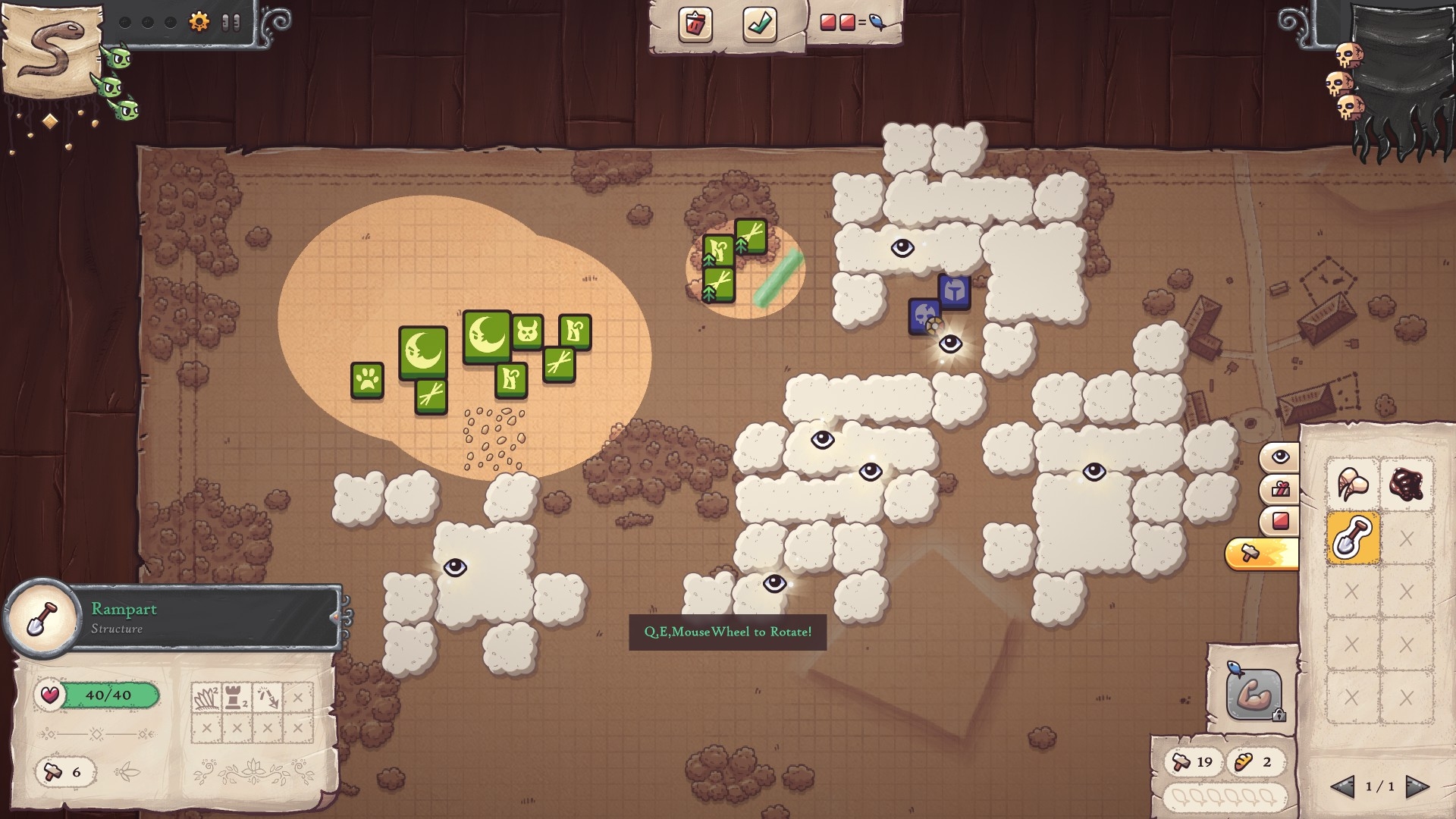
After pre-scrap phases in which the player dissipates patches of enemy-concealing fog-of-war using scout-funded clicks, then deploys units and purchases and arranges fortifications, the pleasingly legible violence commences.
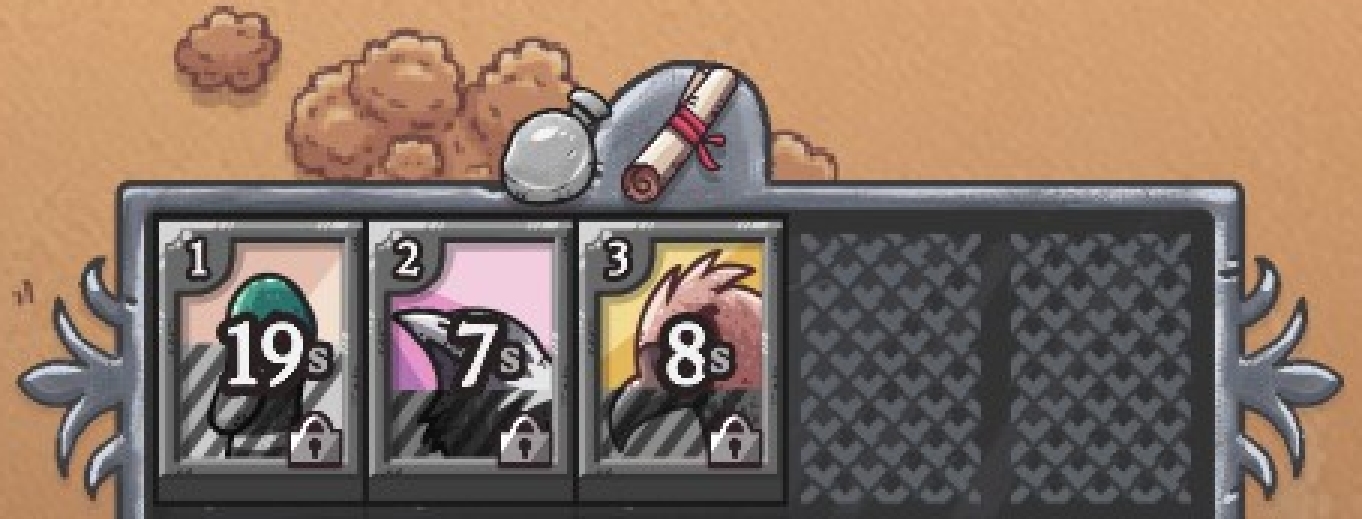
Every command must be issued via an avian messenger. As messengers are limited in number and come with cooldown periods, a good portion of a typical WF engagement is spent sitting on your hands while timers tick towards the next intervention opportunity.
While units such as skirmishers aren’t wholly reliant on player input (archers, for instance, will auto-retreat when threatened) without specific instructions your troops won’t charge or use their powerful special abilities.
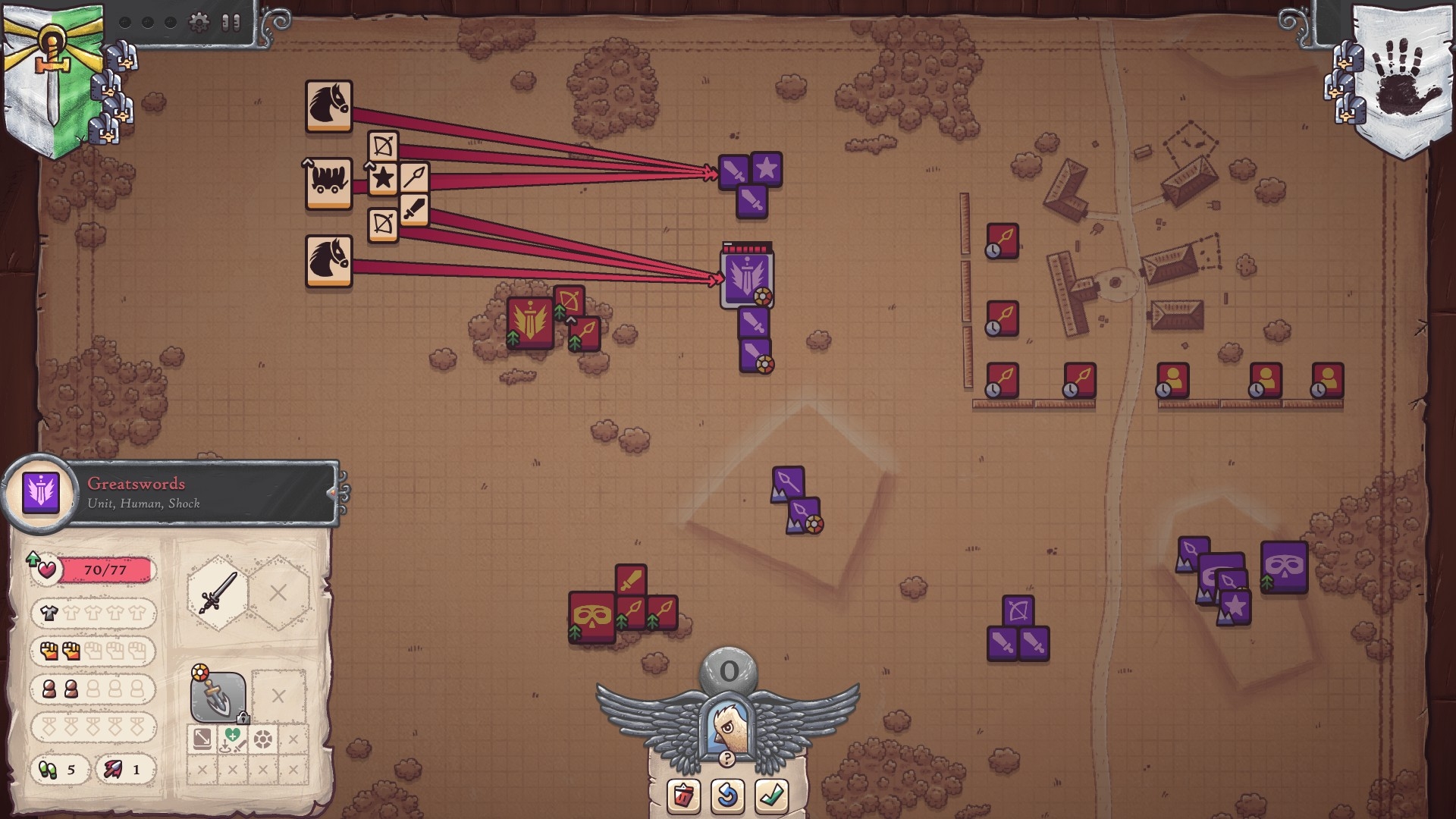
The speed at which the battles unfold coupled with the need to manually trigger actions such as charges, push backs (a spearman speciality) rallies (commanders only), and fire attacks (catapults and archers) meant my first hour with WF was tinged with exasperation. However, once I’d got used to prodding the pause button at regular intervals, and learned when and where to employ party tricks such as ‘break free’ (swordsmen) and ‘cut down’ (brigands and goblins), admiration elbowed out much of the exasperation.
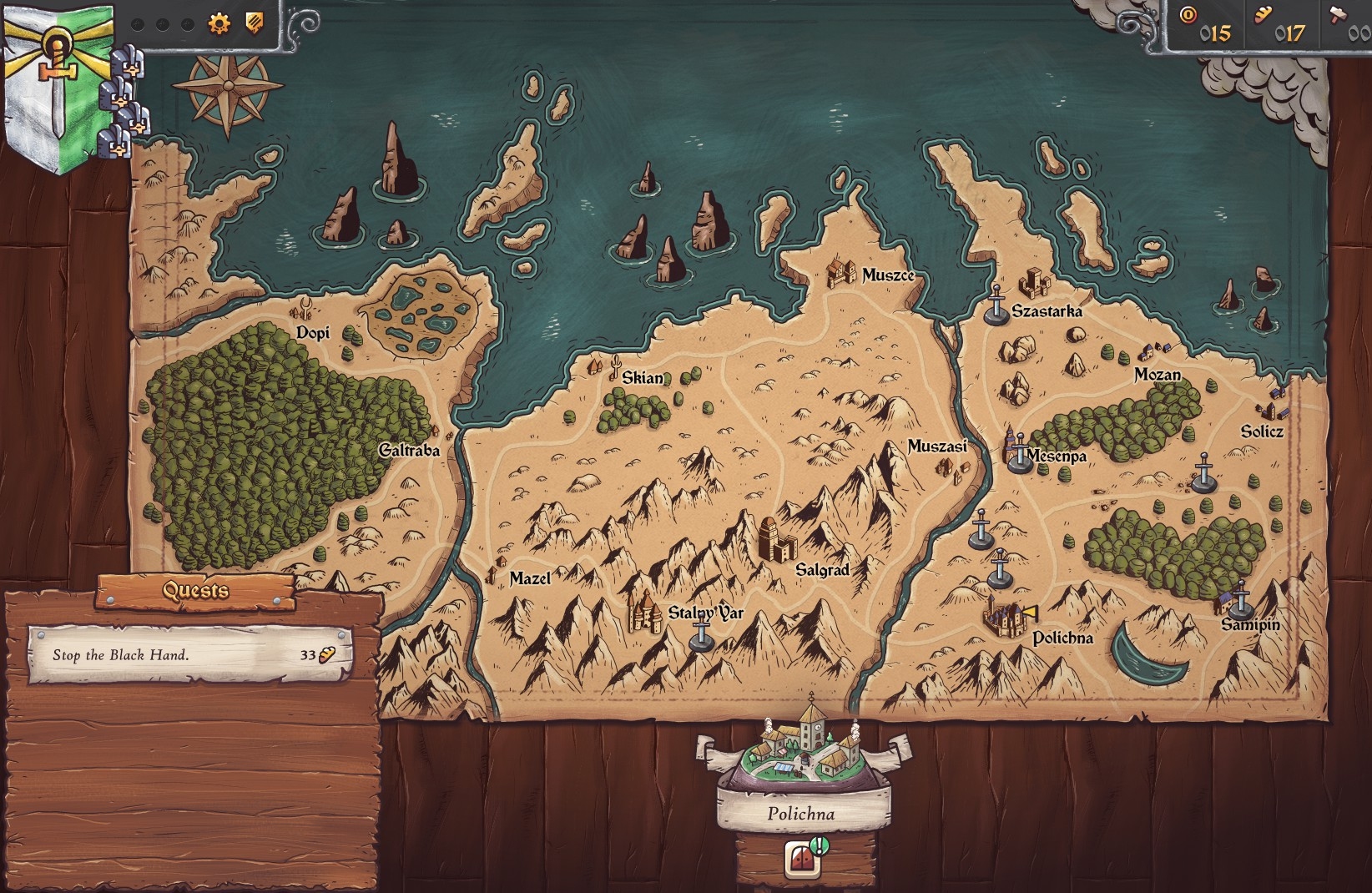
I’m hoping WF emerges from Early Access with a speed slider, a Field of Glory-style skirmish generator, additional campaigns, and less predictable offensive AI. Right now a playthrough of ‘Conquering Shadows’, the only campaign available, probably won’t occupy you for longer than three hours. Core force carry-over and customisation, plus quest choices and decision dialogues, should guarantee surprises in subsequent playthroughs, but even so, the game’s story-driven side feels undersized at present.
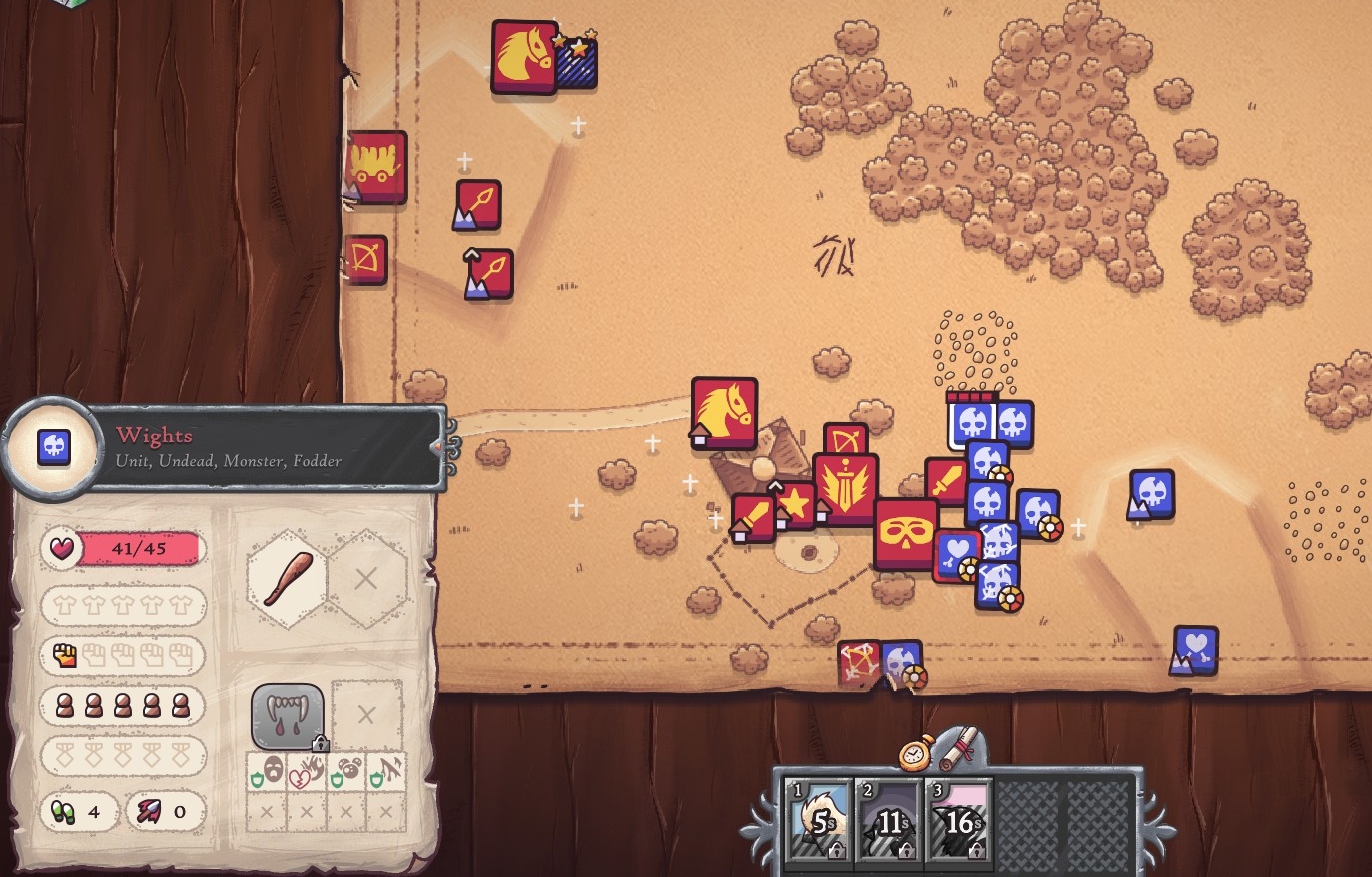
Currently, the only alternative to the campaign is ‘arena’ – a win-to-progress mode involving strings of unconnected battles. In one scrap you could be marshaling a force of orcs or goblins, in the next your catapult fodder might be human or undead. As I’ve yet to complete the initial (?) five-engagement sequence, I’ve no idea whether others follow.
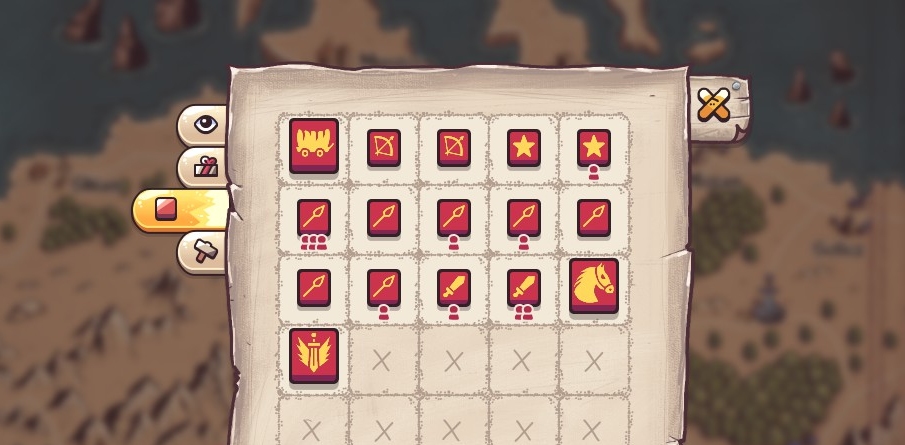
Eventually, assuming Arek’s spinal problems don’t scupper things, WF will also offer an ‘expedition’ mode. Clues in Steam forum posts suggest this will combine the company cultivation mechanics of the campaign with randomly-generated missions.
* * *
The Brew Barons
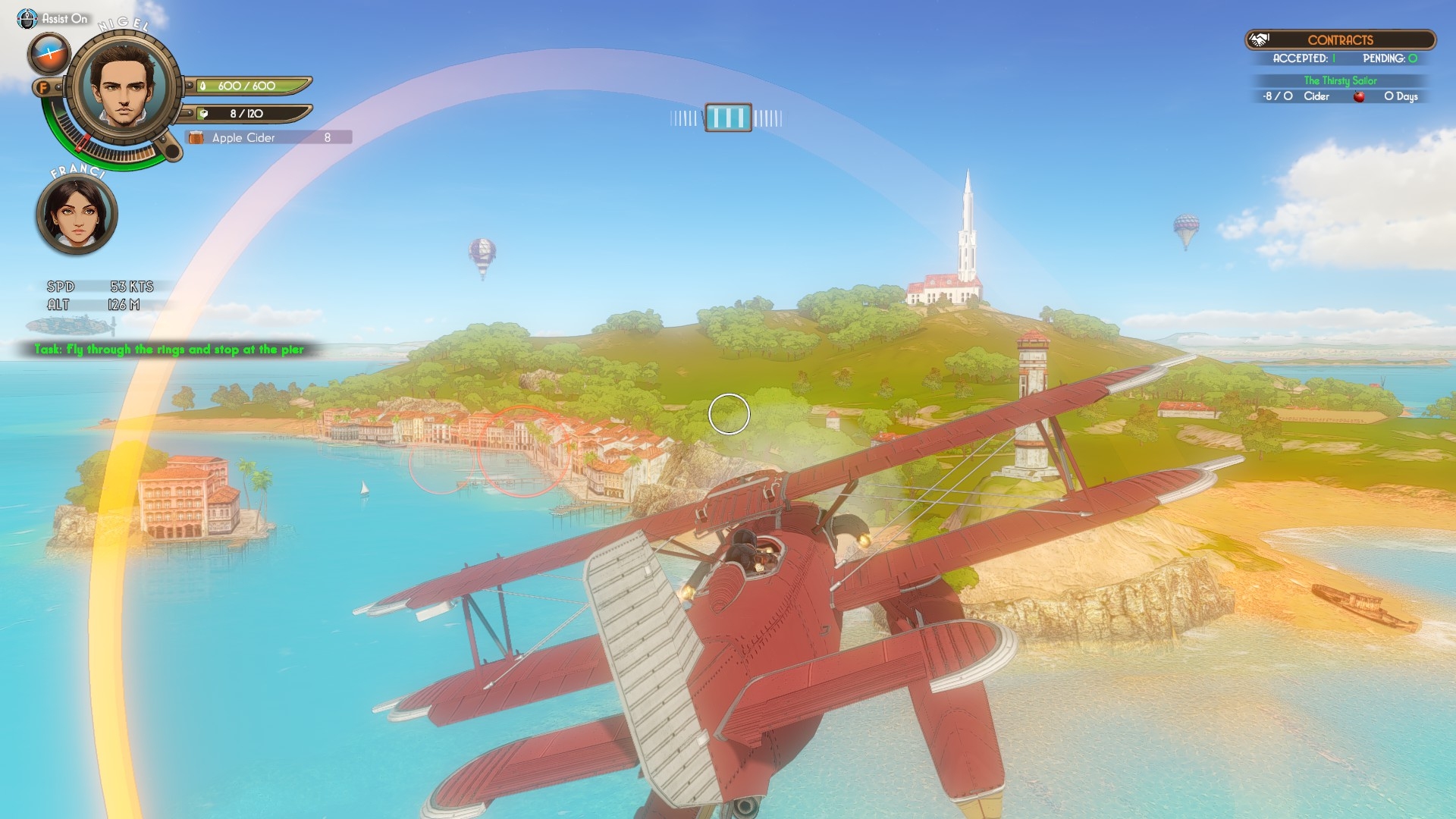
“Our goal was to deliver a beautiful world and pair that with unique gameplay that wasn’t predominantly based on aggression and combat as most flight games do. We’ve set out to build a charming environment that evokes a sense of freedom and tranquility, contrasted with an underlying seedy Pirate organization that will get in your way.”
‘Mission Accomplished’, Lifetap Studios! I’ve some reservations about the camera system and the agricultural and brewing realism in this £17 Porco Rosso-inspired flight ‘n’ commerce game, but having bimbled about The Brew Baron’s spacious island-strewn world for three hours, I can testify to the beauty and novelty.
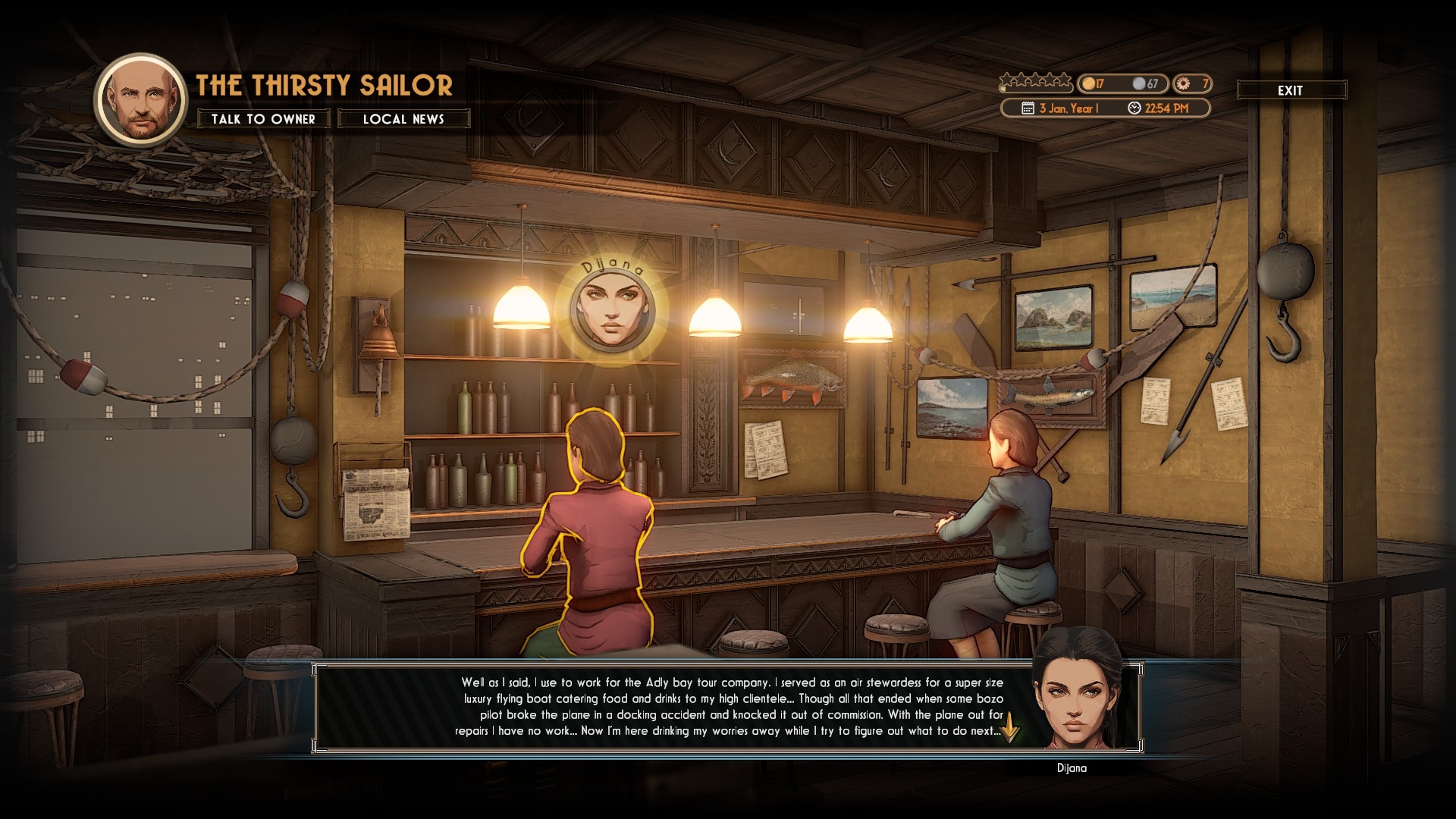
Half-Caribbean, half-Adriatic, that world is liberally sprinkled with the waterfront watering-holes that keep you solvent by purchasing the ales, ciders, brandies etc. concocted in your hangar-equipped brewery/distillery.
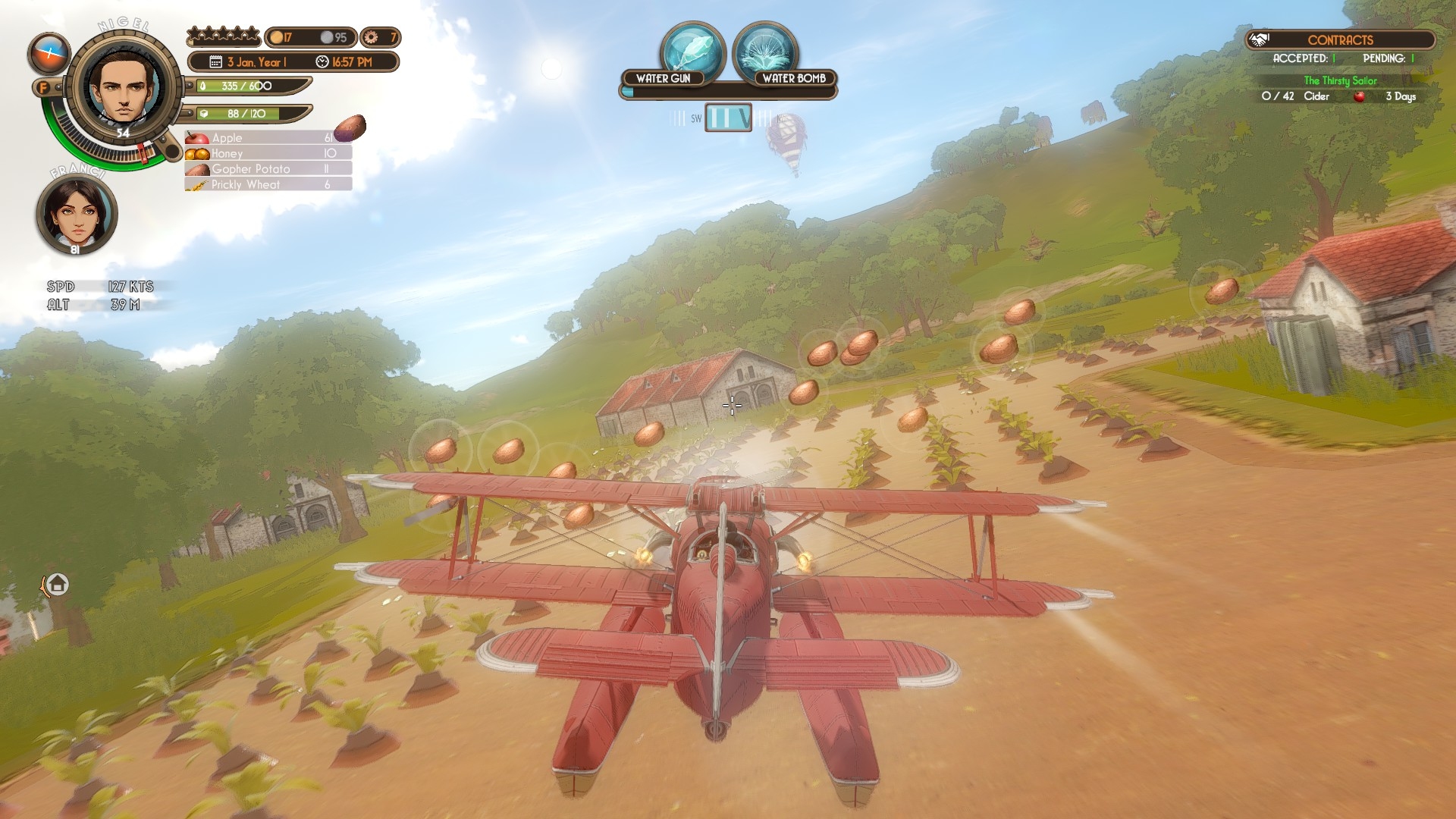
It’s also dotted with the trees and fields that furnish the ingredients necessary for booze production. Tractors, trailers, and seasonal labourers play no part in BB’s profoundly fanciful agronomy. The player collects ingredients such as apples and grapes by strafing trees with a water cannon, and gathers grain by reaping corn with their plane’s whirling prop. Potatoes are plucked from the earth with water bombs. While these mechanics might be utterly ludicrous from a realism standpoint, because they encourage daredevil nap-of-the-earth flying, they aren’t quite as daft as they first appear.
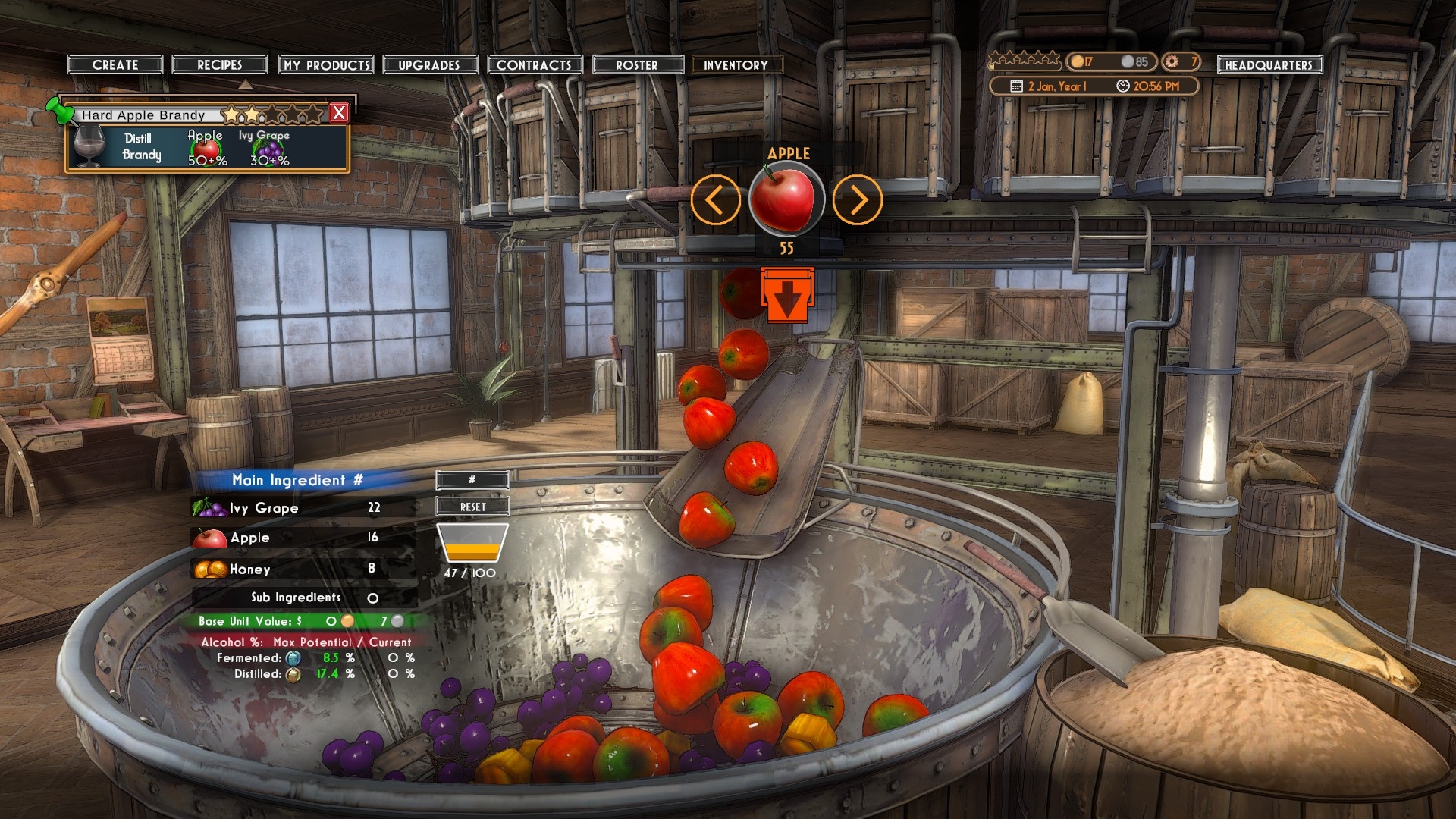
Although you are free to experiment with different ingredient combos, following set ‘recipes’ acquired during the course of the free-form, humour-flecked campaign, guarantees happy customers and a healthy income.
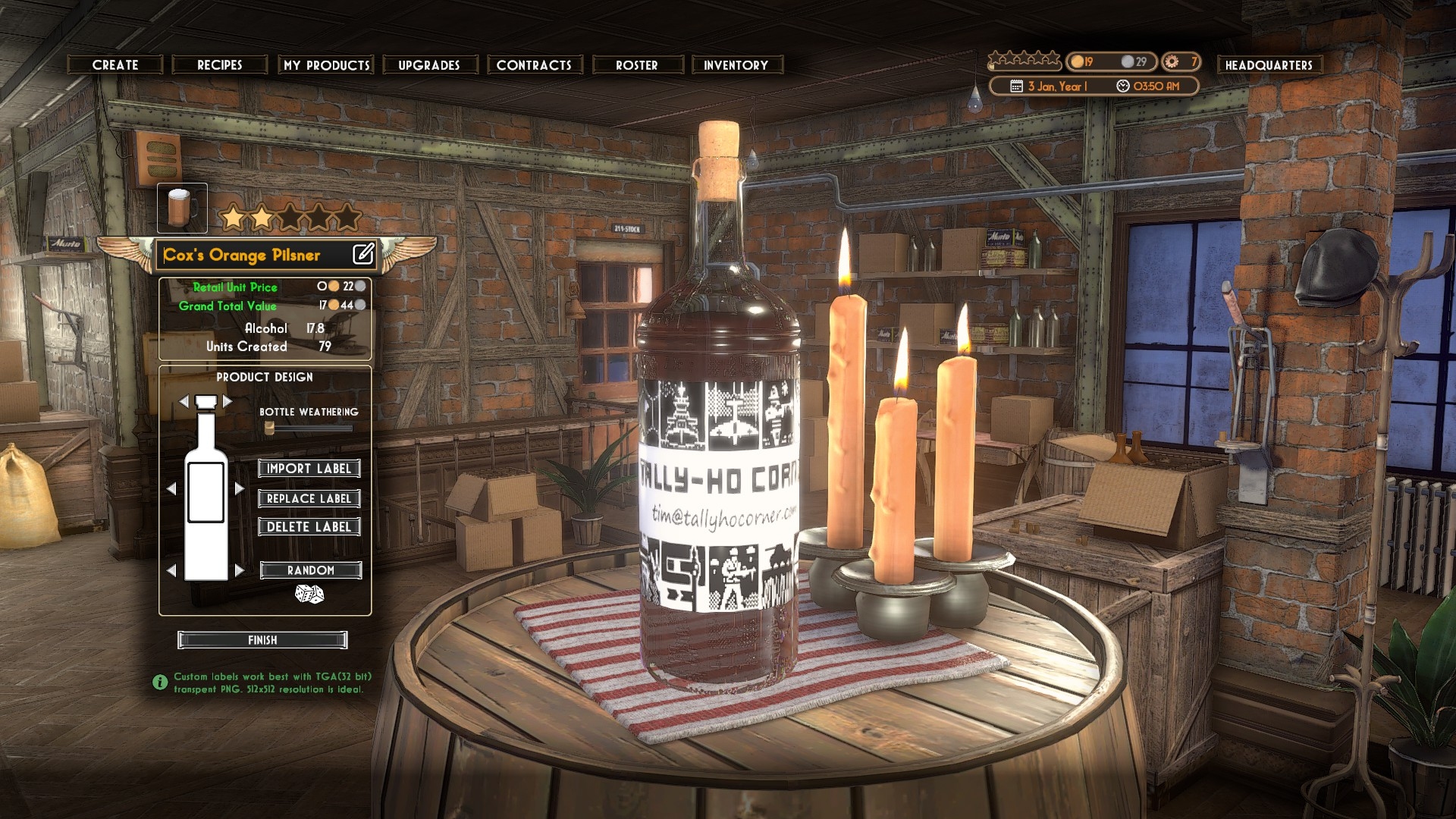
Of the recipes I came across during my playtest, one was found floating in a corked bottle near a secluded beach.
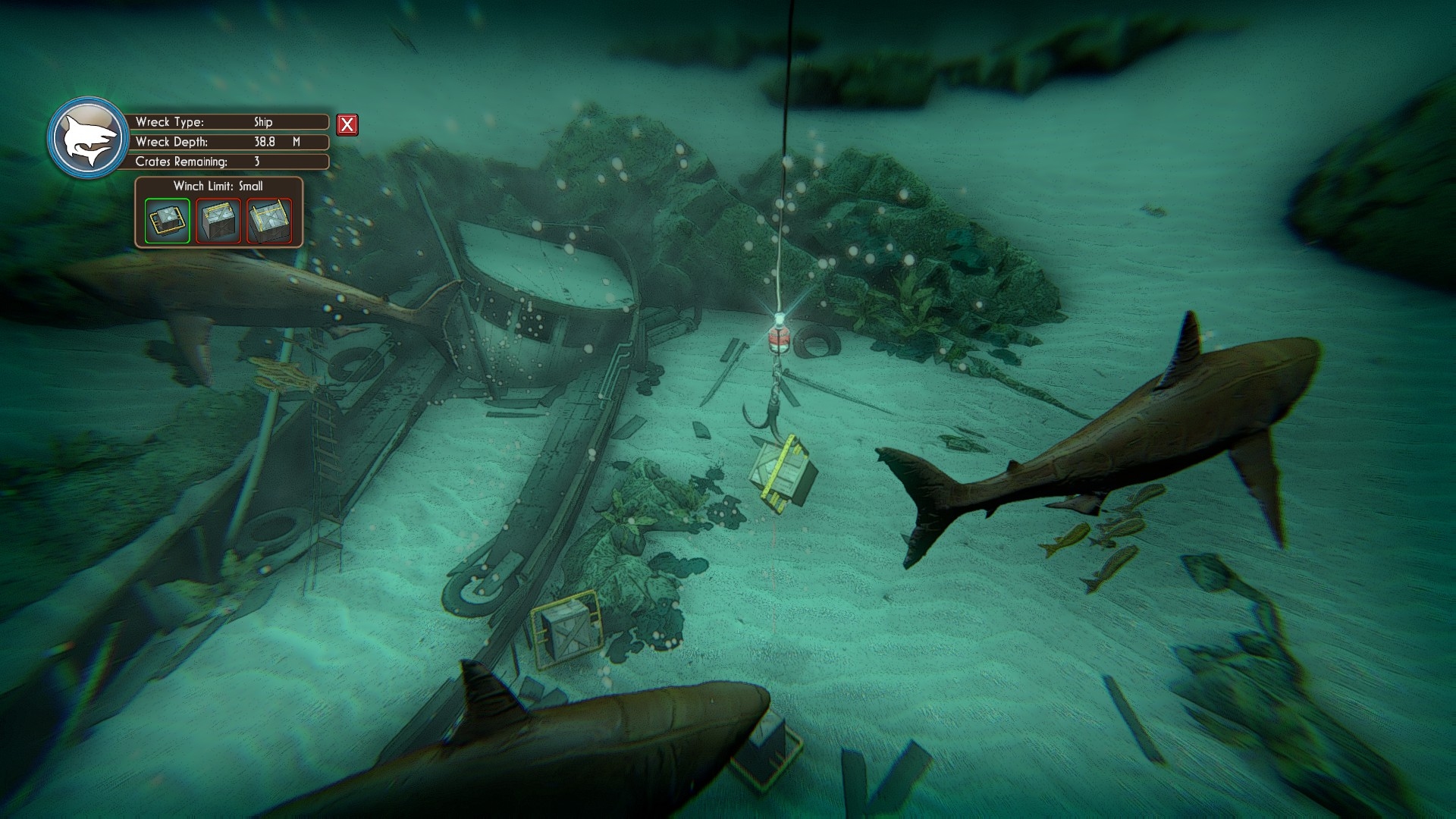
Another was retrieved from a crate raised from the shallows during a slightly iffy wreck salvage mini-game.
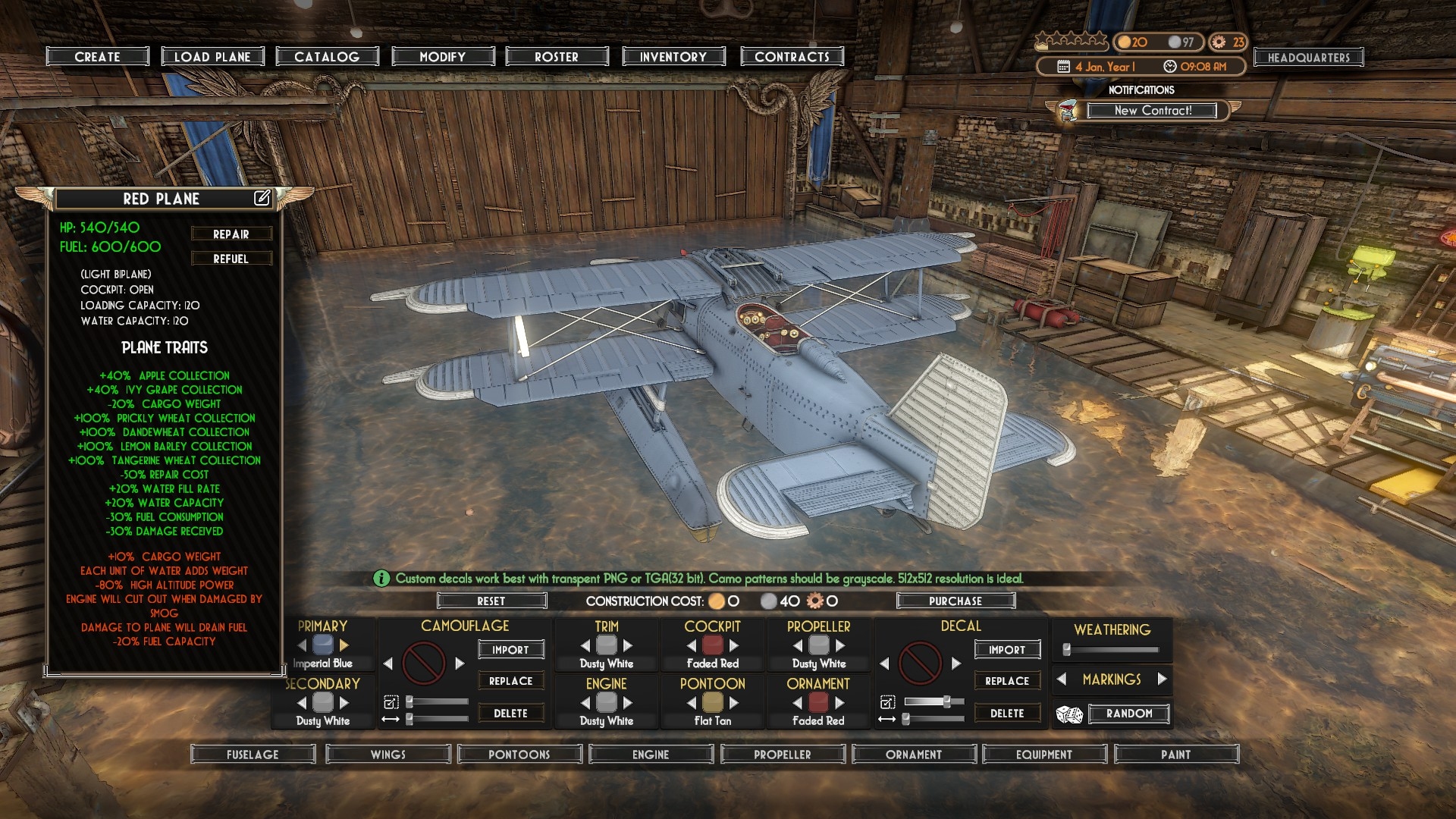
The closest I’ve come to dogfighting thus far was a brief radio exchange with a nearby sky pirate. Annoyed that I was trespassing on his patch – an island not far from the main town – he recommended I clear off sharpish. I obliged. When I’ve earned enough moulah to upgrade the feeble starting floatplane, I’ll return and test his mettle/skills.
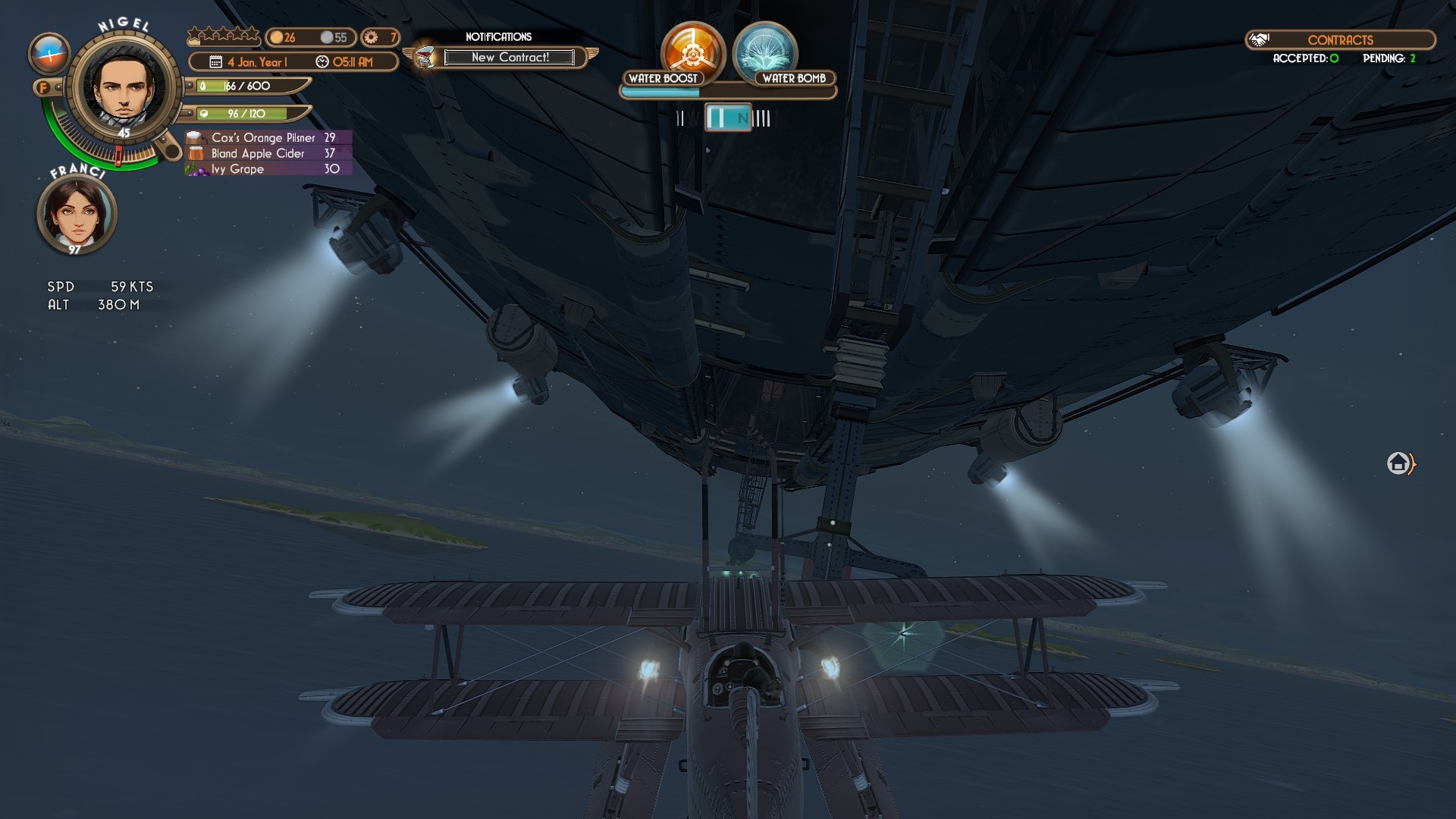
Unsurprisingly, BB’s bellicose brigands, colossal airships, and fictional Thirties aerodynes, regularly bring to mind Crimson Skies and BOMB. While the newcomer boasts many of the elements that made Zipper Interactive’s and La Moustache Studio’s creations so memorable, it sadly doesn’t come with the cockpit views or the solid camera system that helped those titles immerse and empower their audiences.
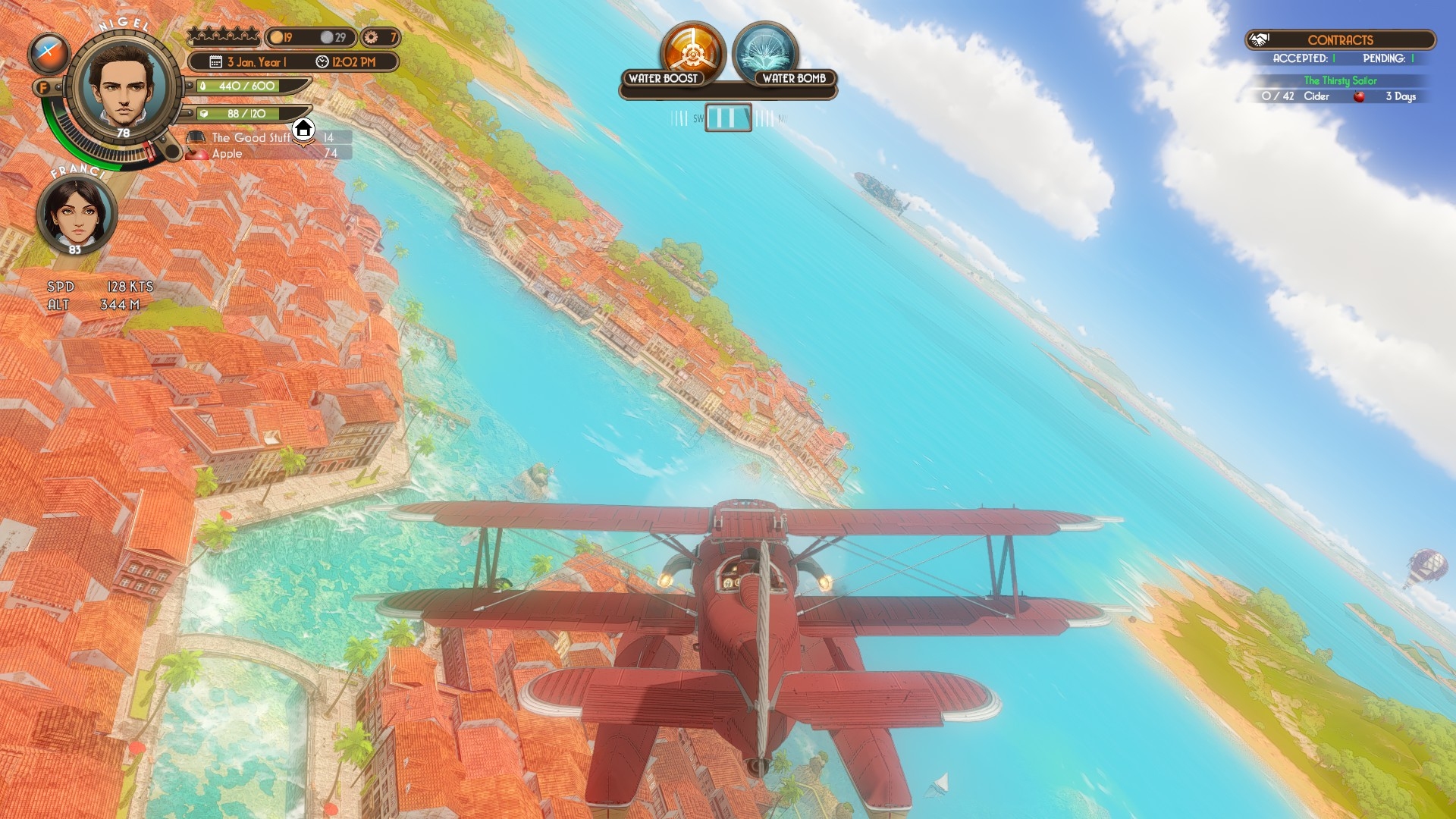
I ended up using a fixed chase cam in BB not because I liked it but because there was no option to view the world over a hot engine cowling or through a first-person HUD. The fact that I couldn’t get ‘free look’ to work, or find a fly-by cam anywhere, made my Hobson’s choice all the more galling. I reckon The Brew Barons has sufficient originality, style, and challenge to win over bona fide flight simmers looking for a lite distraction, but anyone used to weightier flight fare may find themselves disconsolately dabbing F keys during jaunts.
* * *
Namibia 1915
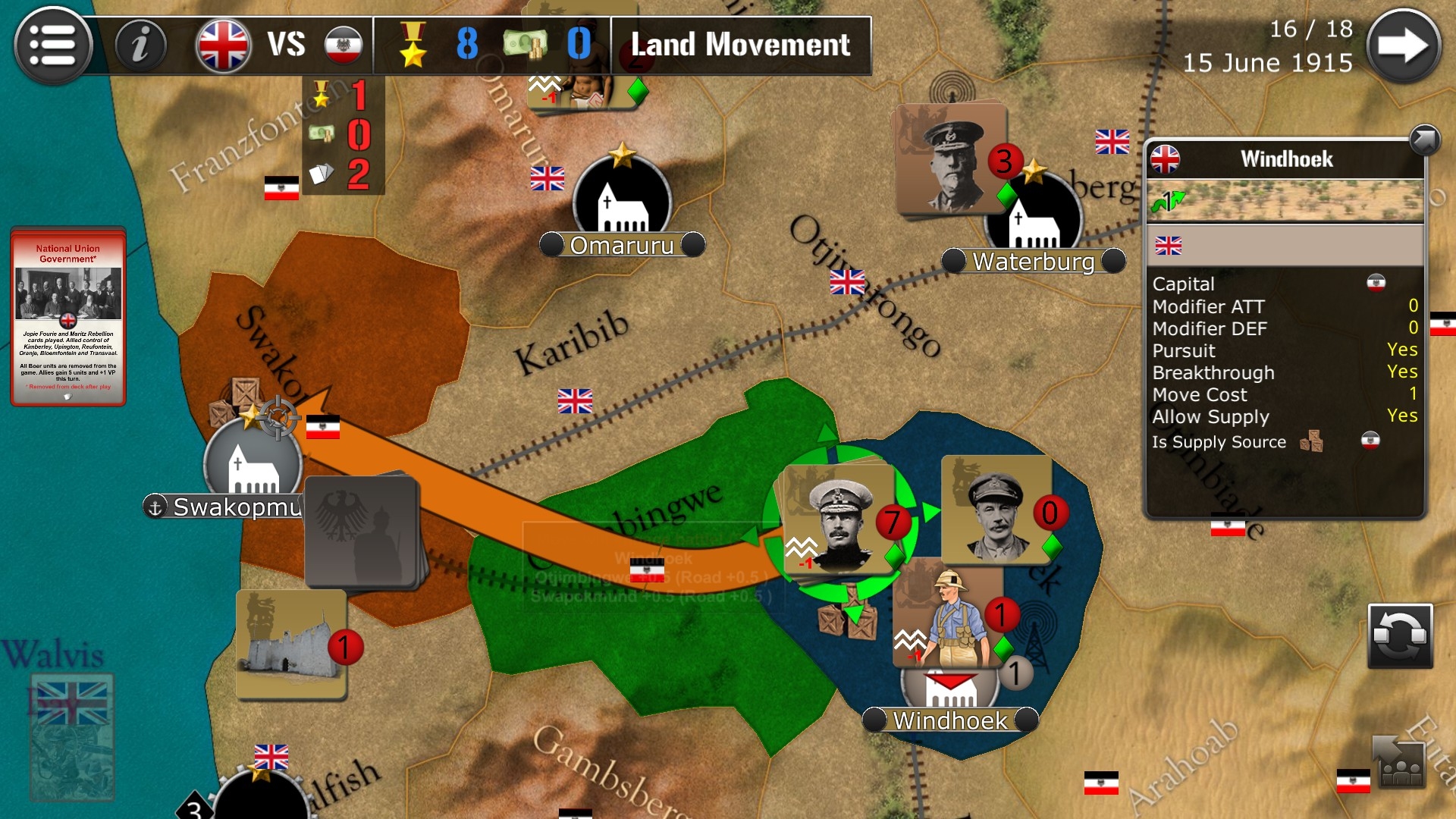
When a wargame has spent the last seven years shamelessly massaging your ego… exclaiming over and over again “Bravo! You’re just too good!”, it comes as a bit of a shock when, out of the blue, said game suddenly decides to wipe the smug grin from your face. Namibia 1915, the latest wallet-friendly (£2.50) DLC for Wars Across The World, has just thrust a Minor Defeat screen under my nose, and the part of me that isn’t affronted and humiliated is really glad.
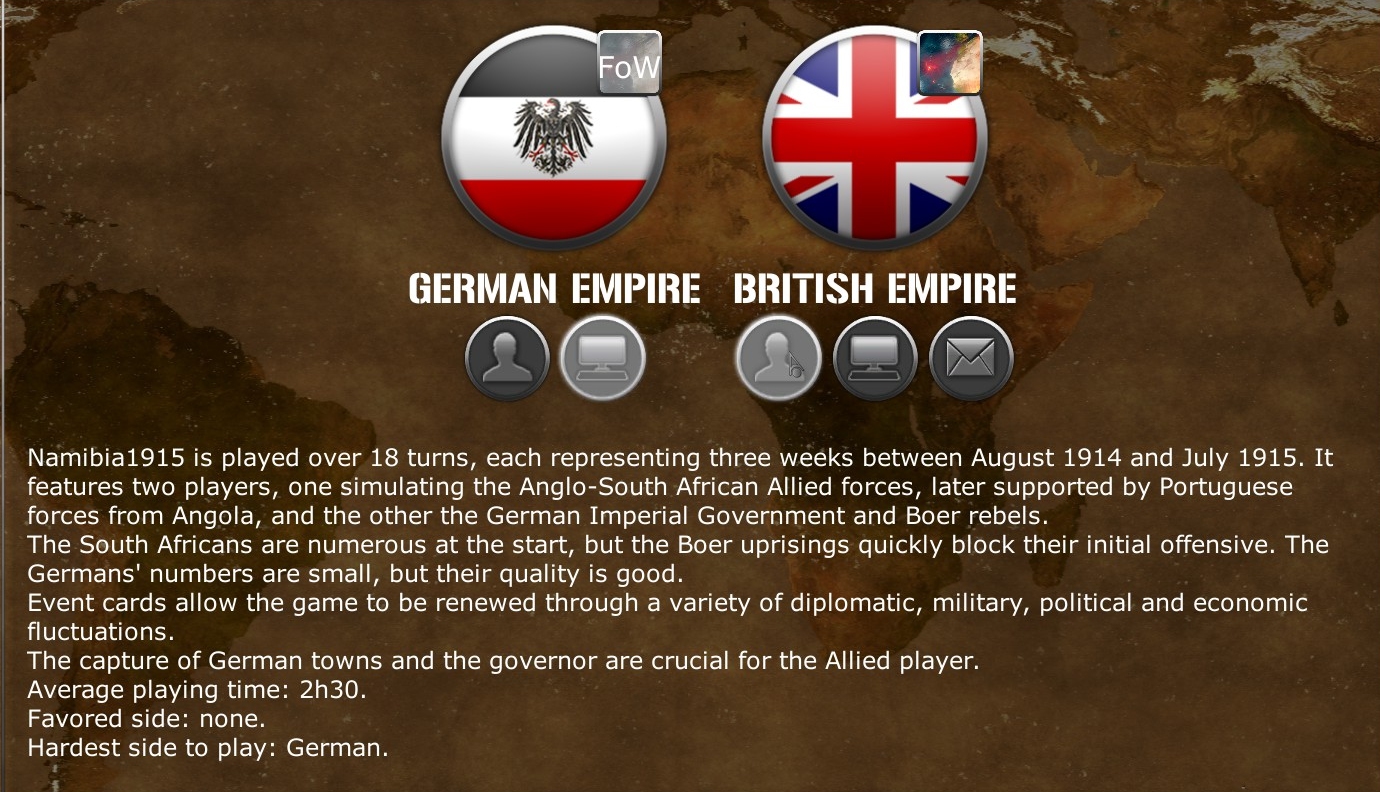
I’d love to say the CPU’s win was down to cunning AI, but the truth is it was largely a consequence of a heavily weighted scoring system and my unfamiliarity with a new event card deck. Counter-intuitively, and despite what’s stated in the briefing, this recreation of a relatively unknown aspect of the Great War is far more testing when played as the Allies than the outnumbered Germans and Boers.
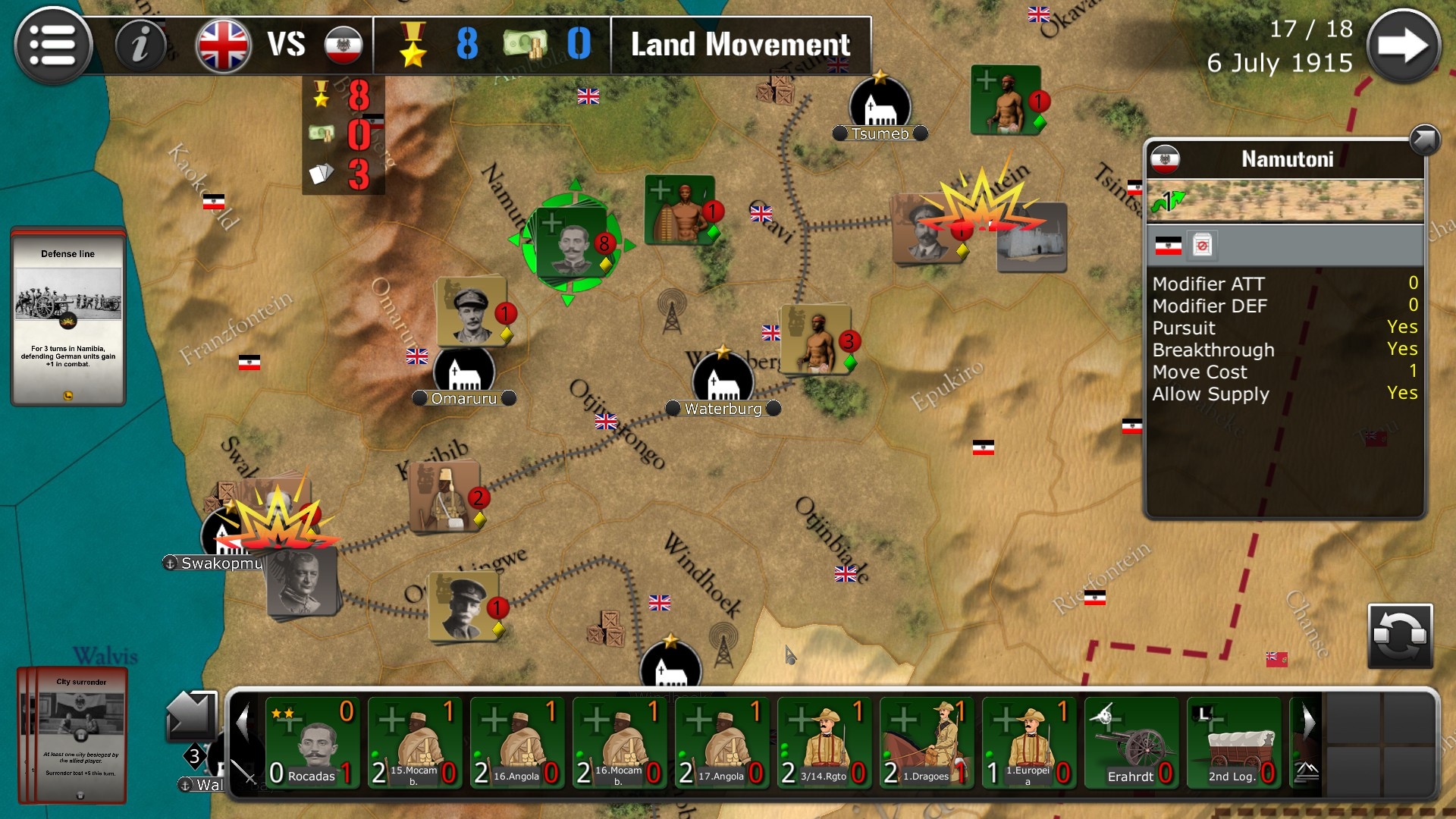
By the end of the last three-week turn I’d conquered the vast majority of German South West Africa. The Teutonic imperialists responsible for the 20th Century’s first genocide were well and truly beaten, and the land known today as Namibia was about to trade one colonial master for another*. However, a late event card that spawned a clutch of foes in my undefended rear and a VP approach that heavily favours the Huns, handed a technical victory to the Kaiser’s men and their Afrikaner allies.
*Every Single Soldier’s Angola ’86 deals with the war at the other end of Namibia’s colonial story.
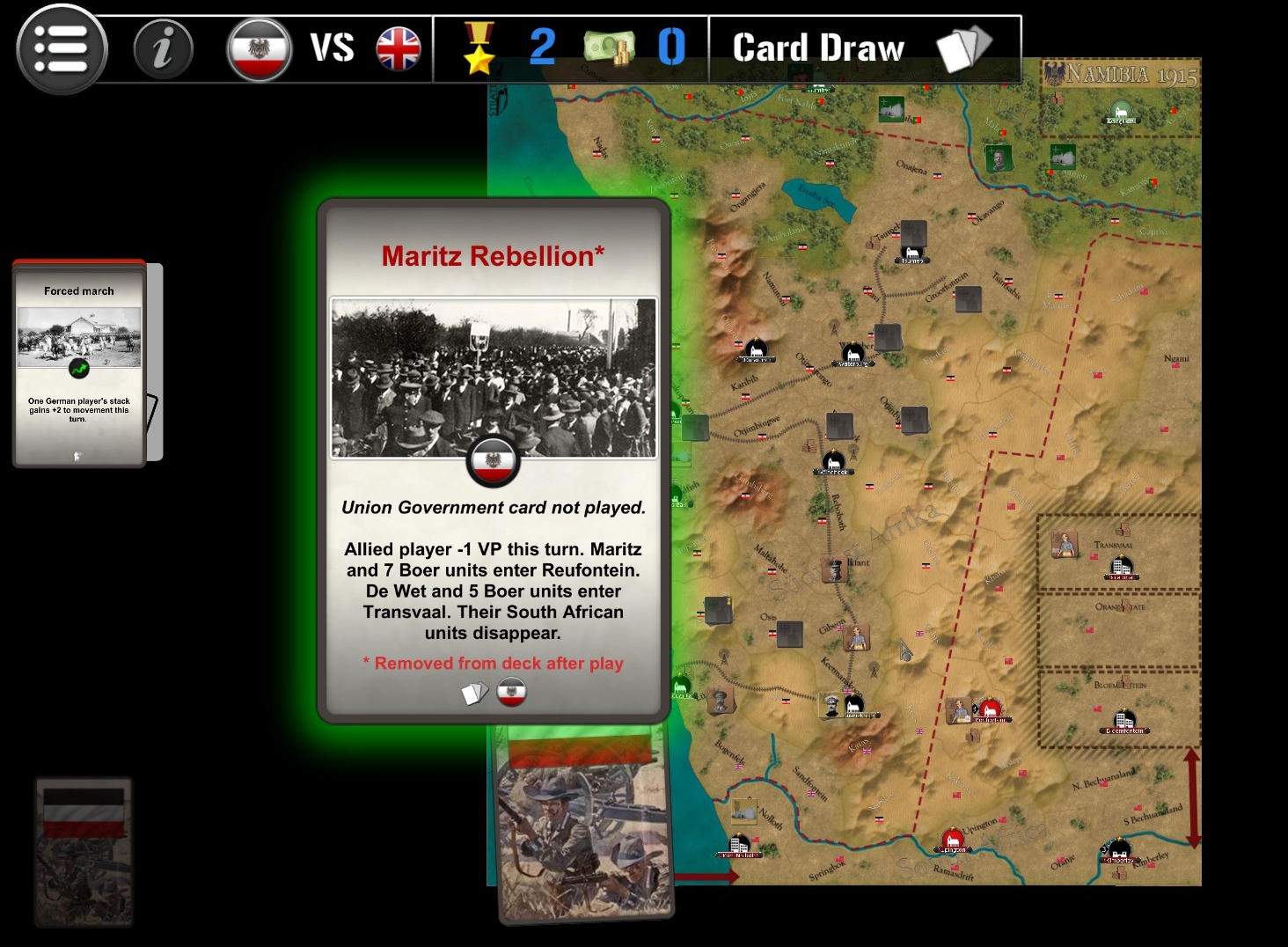
Because Namibia 1915 is no cakewalk*, and because it explores a campaign I’ve never wargamed before, it’s sure to see more action than many of the WATW add-ons in my library. Complicated by a card-triggered Maritz Rebellion, and a map dotted with supply-disrupting desert spaces, the task facing the South African player is a brow-corrugating one. While geography means the main thrust of the SA attack is sure to be from south to north, late in the game, bedroom Bothas are permitted to drag Portuguese forces across the Angola-Namibia border and apply pressure from the top of the board too.
*From one side at least. Winning as the Germans is absurdly easy as the AI invaders display precious little aggression.
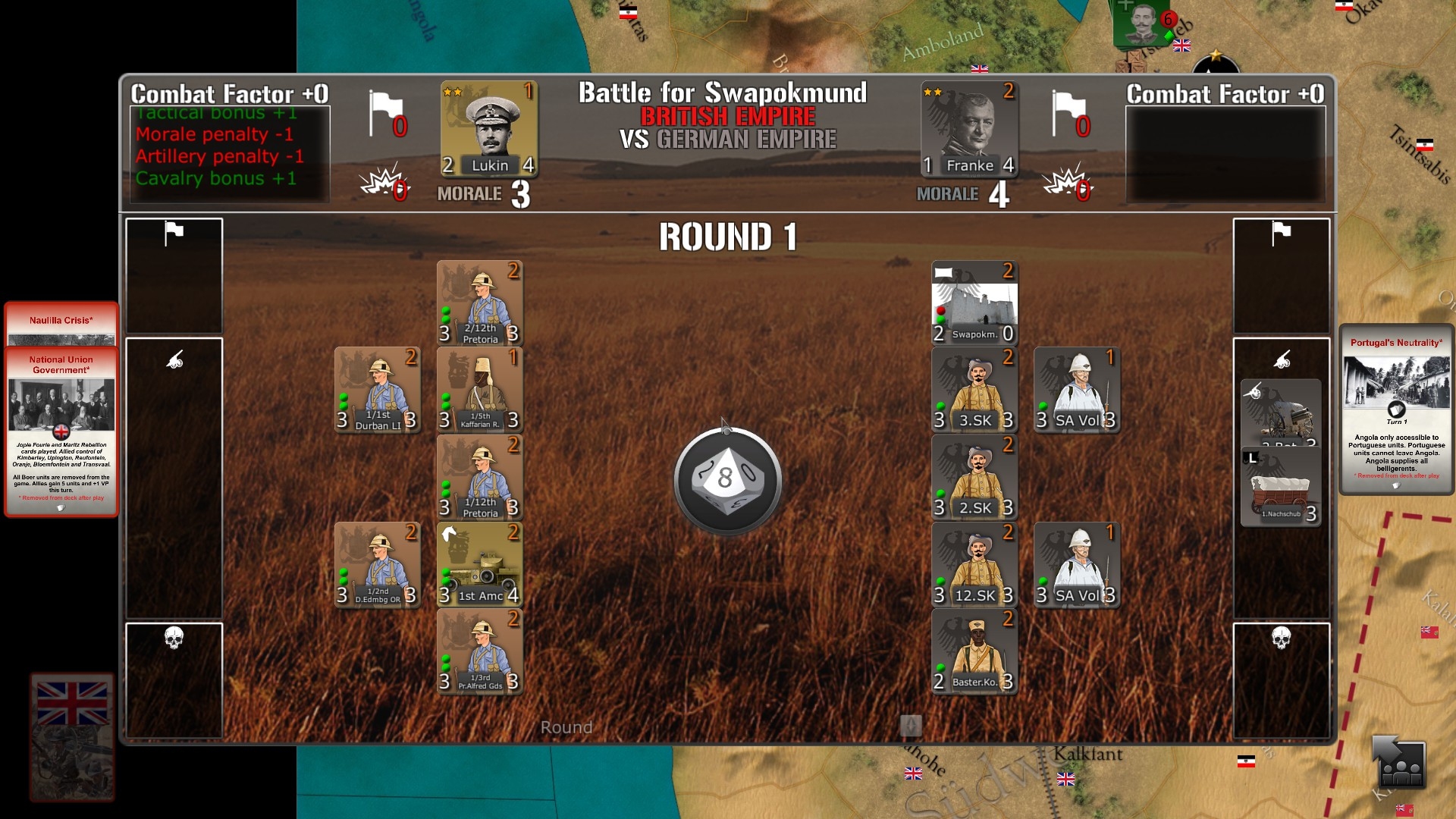
The role nascent airforces played in the conflict is reflected in bonus-bestowing combat cards rather than individual air units – no bad thing. The modest unit and turn count, medium sized map, and lack of air and naval units, ensures swift games. The “2h30” playtime estimate mentioned in the briefing and Steam blurb is misleading. I squeezed three diverting playthroughs into one three-hour audition slot.
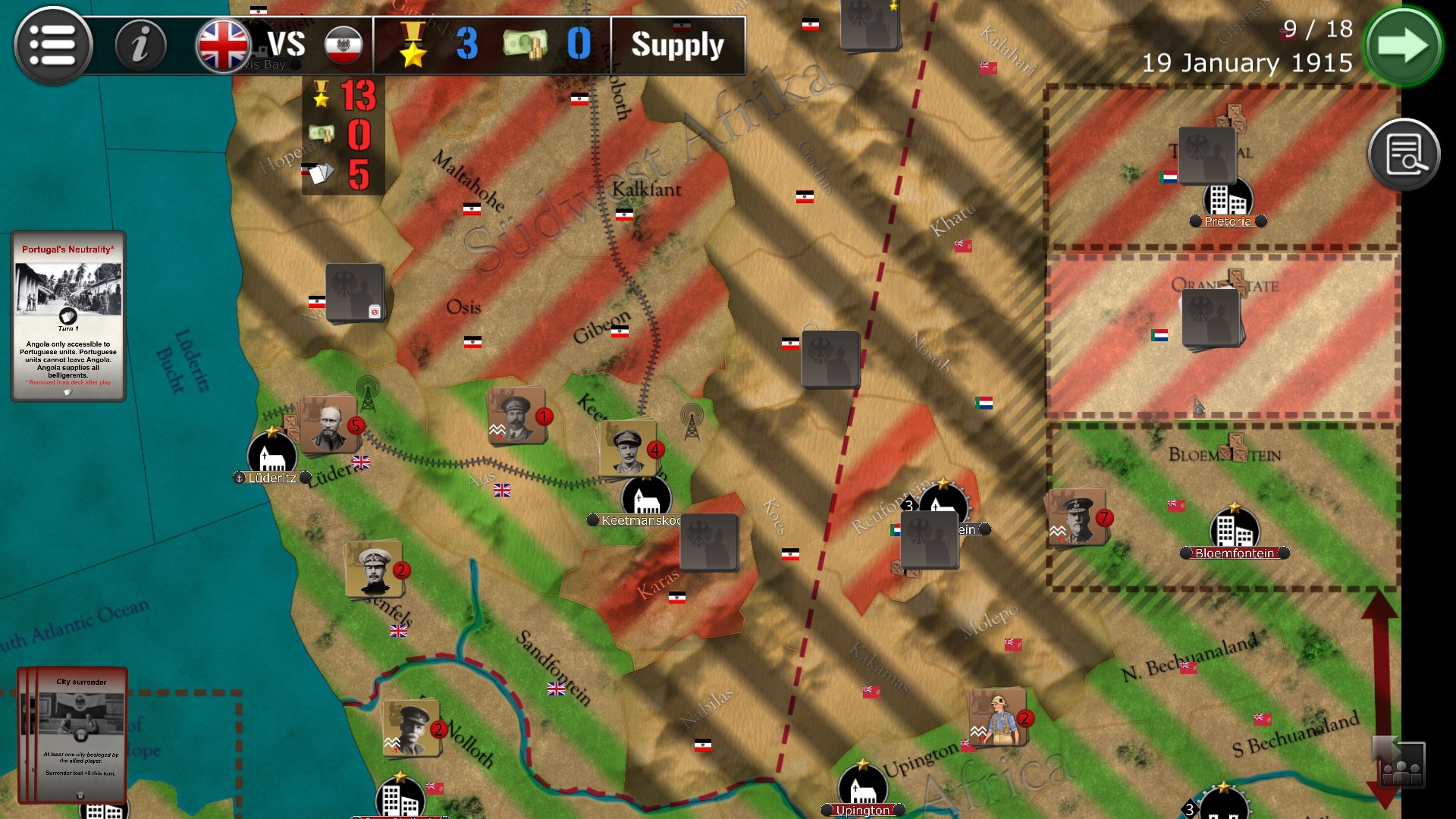

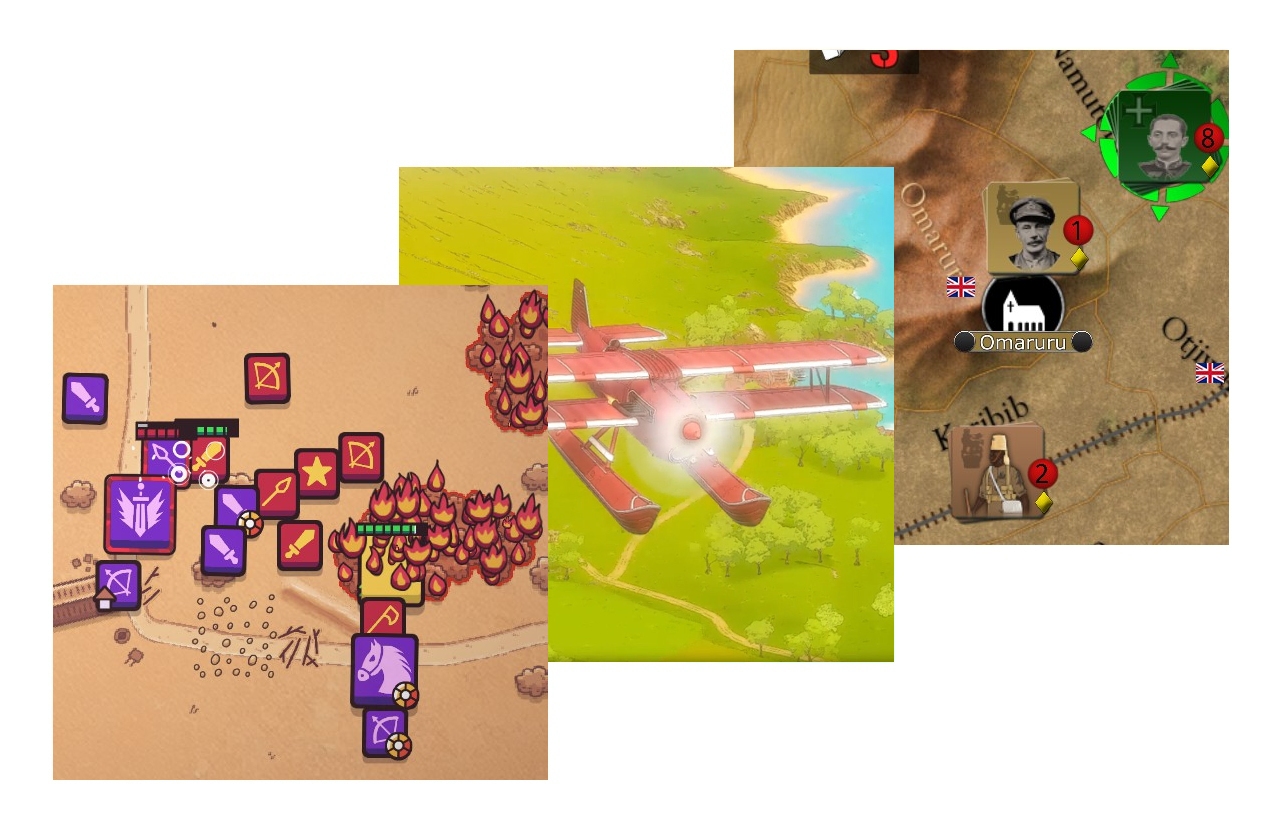
That Brew Baron game looks quite fun, real shame there’s no first person view though.
This is probably on your rader but Thunder Helix, the retro throwback looking LHX game mixed with the -Strike games finally came out on early access yesterday. Would love to read your impression on it.
If all goes to plan, Early Access Thunder Helix will be Cornered next Friday.
@Tim
“an island nor far” – should be ‘not far’
– – – – – – – –
Quote: “despite what’s stated in the briefing, this […] is far more testing when played as the…”
I’m not specifically targeting WATW, but this must appear high on the list of peeves of any new player, rarely to be overwritten by the devs even with all the other patches they produce.
A minority of the fault is with the new player, for assuming ‘easy’ means ‘instructive’.
The devs have a number of ways to lessen the frustration:
1) Mind your language
a) Avoid ‘Easy’ as it can mean a range of things from ‘basically auto-win even if you do nothing’ to ‘unchallenging for old-hands, to be used to see how ludicrously high a score can go’.
b) Try to describe the difficulty profile of the scenario. Too often those identified as ‘easy’ start you off with a strong military but a rebellion to overcome before they become straightforward (point your stacks towards the victory location). I can’t be alone in struggling to crush rebels when new to a game: surrounding them, pinning them down, forcing them to battle; you spend 10 turns doing something you later learn you’re expected to do in 3.
2) Smaller scenarios with fewer choices
Something to do post-tutorial. Your game lets me invade Europe through Spain, Italy or Greece? Great!
How about letting me conquer just Spain and ignore everything else? You can even put pop-ups in it and obvious things to do: Catalonia is suitable for a port, Toledo makes nice weapons (who knew?)…
Days since last THC typo: 0
I struggle to understand why the splendid people making WATW’s DLC don’t offer three versions of each scenario: ‘blue’, ‘red’, and multiplayer. Namibia 1915 proves AI flaws can be disguised with ingenious/weighted victory conditions. Unfortunately the victory conditions that make player-engineered Anglo-South African triumphs relatively difficult to achieve, make German ones inevitable. In my first German playthrough the final VP score was 42:0!